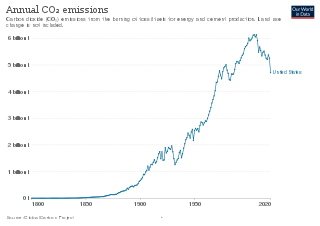Related Research Articles

Polychlorinated biphenyls (PCBs) are highly carcinogenic chemical compounds, formerly used in industrial and consumer products, whose production was banned in the United States by the Toxic Substances Control Act in 1976 and internationally by the Stockholm Convention on Persistent Organic Pollutants in 2001.

The Natural Resources Defense Council (NRDC) is a United States-based 501(c)(3) non-profit international environmental advocacy group, with its headquarters in New York City and offices in Washington D.C., San Francisco, Los Angeles, Chicago, Bozeman, India, and Beijing. The group was founded in 1970 in opposition to a hydro-electric power power plant in New York.

Indian Point Energy Center (I.P.E.C.) is a three-unit nuclear power plant station located in Buchanan, just south of Peekskill, in Westchester County, New York. It sits on the east bank of the Hudson River, about 36 miles (58 km) north of Midtown Manhattan. The facility has permanently ceased power operations as of April 30, 2021. Before its closure, the station's two operating reactors generated about 2,000 megawatts (MWe) of electrical power, about 25% of New York City's usage. The station is owned by Holtec International, and consists of three permanently deactivated reactors, Indian Point Units 1, 2, and 3. Units 2 and 3 were Westinghouse pressurized water reactors. Entergy purchased Unit 3 from the New York Power Authority in 2000 and Units 1 and 2 from Consolidated Edison in 2001.

Pilgrim Nuclear Power Station (PNPS) is a decommissioned nuclear power plant in Massachusetts in the Manomet section of Plymouth on Cape Cod Bay, south of the tip of Rocky Point and north of Priscilla Beach. Like many similar plants, it was constructed by Bechtel, and was powered by a General Electric BWR 3 boiling water reactor inside of a Mark 1 pressure suppression type containment and generator. With a 690 MW production capacity, it produced about 14% of the electricity generated in Massachusetts.

Thermal pollution, sometimes called "thermal enrichment", is the degradation of water quality by any process that changes ambient water temperature. Thermal pollution is the rise or drop in the temperature of a natural body of water caused by human influence. Thermal pollution, unlike chemical pollution, results in a change in the physical properties of water. A common cause of thermal pollution is the use of water as a coolant by power plants and industrial manufacturers. Urban runoff—stormwater discharged to surface waters from rooftops, roads, and parking lots—and reservoirs can also be a source of thermal pollution. Thermal pollution can also be caused by the release of very cold water from the base of reservoirs into warmer rivers.

Braidwood Generating Station is located in Will County in northeastern Illinois, U.S. The nuclear power plant serves Chicago and northern Illinois with electricity. The plant was originally built by Commonwealth Edison company, and subsequently transferred to Com Ed's parent company, Exelon Corporation. Following Exelon's spin-off of their Generation company, the station was transferred to Constellation Energy.

United States environmental law concerns legal standards to protect human health and improve the natural environment of the United States. While subject to criticism at home and abroad on issues of protection, enforcement, and over-regulation, the country remains an important source of environmental legal expertise and experience.

Aquatic biomonitoring is the science of inferring the ecological condition of rivers, lakes, streams, and wetlands by examining the organisms that live there. While aquatic biomonitoring is the most common form of biomonitoring, any ecosystem can be studied in this manner.
The Climate Change Science Program (CCSP) was the program responsible for coordinating and integrating research on global warming by U.S. government agencies from February 2002 to June 2009. Toward the end of that period, CCSP issued 21 separate climate assessment reports that addressed climate observations, changes in the atmosphere, expected climate change, impacts and adaptation, and risk management issues. Shortly after President Obama took office, the program's name was changed to U.S. Global Change Research Program (USGCRP) which was also the program's name before 2002. Nevertheless, the Obama Administration generally embraced the CCSP products as sound science providing a basis for climate policy. Because those reports were mostly issued after the Fourth Assessment Report of the Intergovernmental Panel on Climate Change (IPCC), and in some cases focused specifically on the United States, they were generally viewed within the United States as having an importance and scientific credibility comparable to the IPCC assessments for the first few years of the Obama Administration.

The W. H. Sammis Power Plant is a 2.2-gigawatt coal power plant in Stratton, Jefferson County, Ohio. The plant is operated by Energy Harbor. It began operations in 1960.

The environmental impact of reservoirs comes under ever-increasing scrutiny as the global demand for water and energy increases and the number and size of reservoirs increases.

Fish stocking is the practice of releasing fish that are artificially raised in a hatchery into a natural body of water, in order to supplement existing wild populations or to create a new population where previously none exists. Stocking may be done for the benefit of commercial, recreational or tribal heritage fishing, but may also be done for ecological conservation to restore or increase the population of threatened/endangered fish species that is pressured by prior overfishing, habitat destruction and/or competition from invasive species.

The environmental policy of the United States is a federal governmental action to regulate activities that have an environmental impact in the United States. The goal of environmental policy is to protect the environment for future generations while interfering as little as possible with the efficiency of commerce or the liberty of the people and to limit inequity in who is burdened with environmental costs. As his first official act bringing in the 1970s, President Richard Nixon signed the U.S. National Environmental Policy Act (NEPA) into law on New Years Day, 1970. Also in the same year, America began celebrating Earth Day, which has been called "the big bang of U.S. environmental politics, launching the country on a sweeping social learning curve about ecological management never before experienced or attempted in any other nation." NEPA established a comprehensive US national environmental policy and created the requirement to prepare an environmental impact statement for “major federal actions significantly affecting the quality of the environment.” Author and consultant Charles H. Eccleston has called NEPA, the world's “environmental Magna Carta”.

The New York Public Service Commission is the public utilities commission of the New York state government that regulates and oversees the electric, gas, water, and telecommunication industries in New York as part of the Department of Public Service. The department's regulations are compiled in title 16 of the New York Codes, Rules and Regulations. The current chairman of the Commission and chief executive of the Department is Rory M. Christian. His term began on June 10, 2021 and runs through February 1, 2027.
Entergy Corp. v. Riverkeeper, Inc., 556 U.S. 208 (2009), is a decision by the United States Supreme Court that reviewed the Environmental Protection Agency's (EPA) interpretation of the Clean Water Act regulations with regard to cooling water intakes for power plants. Existing facilities are mandated to use the "Best Technology Available" to "minimize the adverse environmental impact." The issue was whether the agency may use a cost–benefit analysis (CBA) in choosing the Best Available Technology or (BAT) to meet the National Performance Standards (NPS).

Point source water pollution comes from discrete conveyances and alters the chemical, biological, and physical characteristics of water. In the United States, it is largely regulated by the Clean Water Act (CWA). Among other things, the Act requires dischargers to obtain a National Pollutant Discharge Elimination System (NPDES) permit to legally discharge pollutants into a water body. However, point source pollution remains an issue in some water bodies, due to some limitations of the Act. Consequently, other regulatory approaches have emerged, such as water quality trading and voluntary community-level efforts.
Iron Gate Dam is an earthfill hydroelectric dam on the Klamath River in northern California, outside Hornbrook, California, opened in 1964. The dam blocks the Klamath River to create the Iron Gate Lake Reservoir. It is the lowermost of a series of power dams on the river, the Klamath River Hydroelectric Project, operated by PacifiCorp. It also poses the first barrier to migrating salmon in the Klamath. The Iron Gate Fish Hatchery was placed just after the dam, hatching salmon and steelhead that are released back into the river. The Iron Gate Dam along with the John C. Boyle Dam are two of four on the Klamath River that would be removed under the Klamath Economic Restoration Act. As of February 2016, the states of Oregon and California, the dam owners, federal regulators and other parties reached an agreement to remove all four dams by the year 2020, pending approval by the Federal Energy Regulatory Commission. As of February 25, 2022, the FERC released their final Environmental Impact Statement (EIS) on the dam's removal. The Iron Gate Dam is expected to be removed sometime in 2023 or 2024. A movement to Un-Dam the Klamath has been ongoing for 20 years to remove the dams.

Scenic Hudson Preservation Conference v. Federal Power Commission, 354 F.2d 608 is a United States Second Circuit Court of Appeals case in which a public group of citizens, the Scenic Hudson Preservation Conference, organized and initiated legal action after the Federal Power Commission approved plans for Consolidated Edison to construct a power plant on Storm King Mountain, New York. The federal regulatory agency had denied that the environmental group could bring action, but the court disagreed, ruling that Scenic Hudson had legal standing because of their "special interest in aesthetic, conservational, and recreational aspects" of the mountain.
In order to insure that the Federal Power Commission will adequately protect the public interest in the aesthetic, conservational, and recreational aspects of power development, those who by their activities and conduct have exhibited a special interest in such areas must be held to be included in the class of 'aggrieved' parties under s. 313 (b). We hold that the Federal Power Act gives petitioners a legal right to protect their special interests.

Between 1947 and 1977, General Electric polluted the Hudson River by discharging polychlorinated biphenyls (PCBs) causing a range of harmful effects to wildlife and people who eat fish from the river. Other kinds of pollution, including mercury contamination and cities discharging untreated sewage, have also caused problems in the river.

Robert Hamilton Boyle Jr. was an environmental activist, conservationist, book author, journalist and former senior writer for Sports Illustrated. In 1966, Boyle founded the Hudson River Fishermen's Association (HRFA) with its members serving as sentries to protect the river and its inhabitants, help reverse the deterioration caused by river pollution, and bring polluters to justice. The organization grew over the years, and in 1986, was officially renamed Riverkeeper after being merged with HRFA's Riverkeeper program. It was the first "keeper" group in the global Waterkeeper Alliance movement.
References
- 1 2 3 4 Shaw, William H. Shaw (2010). Cengage Advantage Books: Business Ethics: A Textbook with Cases. Cengage Learning. p. 404. ISBN 9780495808763.
- 1 2 Unger, Stephen H. (1994). Controlling Technology: Ethics and the Responsible Engineer. John Wiley & Sons. p. 198. ISBN 9780471591818.
- 1 2 Federal Energy Regulatory Commission (1980). United States. Federal Energy Regulatory Commission. Federal Energy Regulatory Commission. pp. 63, 044.
- ↑ Baslow, Morris H. (1982). The Hudson River Ecosystem: A Case Study.